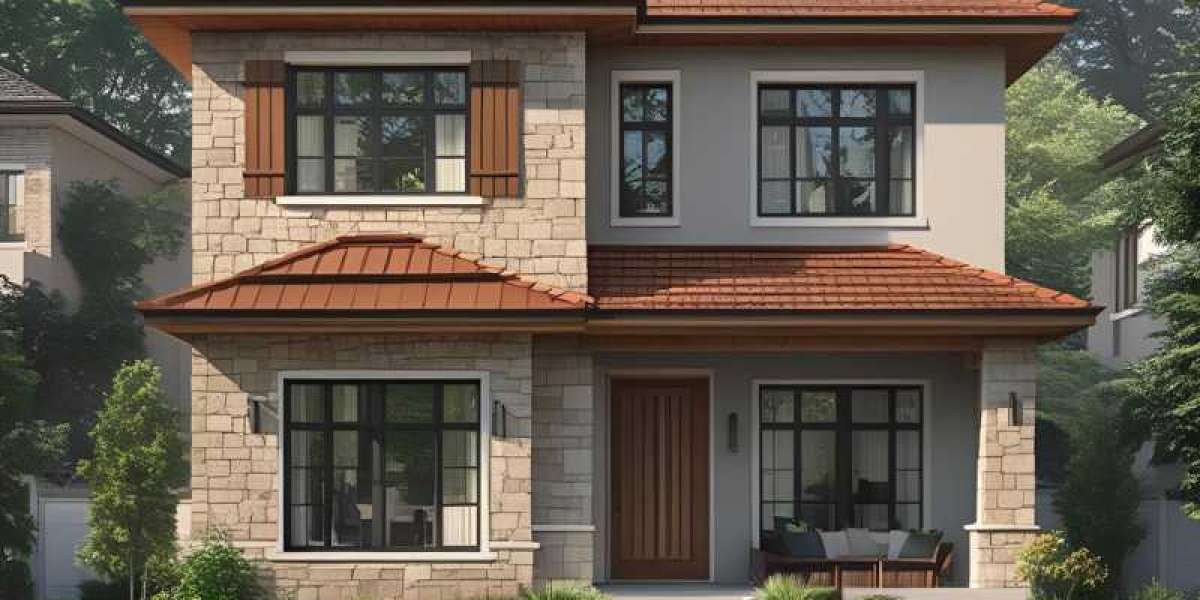In today’s visually driven world, homeowners and architects alike are turning to residential rendering to bring modern home designs to life before a single brick is laid. Residential rendering is the process of creating highly detailed, photorealistic 3D images of a proposed home design.
This technology allows clients to visualize every detail from the exterior façade to the interior layout well before construction begins. By offering a clear and immersive representation of the final product, rendering helps bridge the gap between imagination and reality. ‘
Whether it’s refining architectural features, experimenting with materials, or ensuring the design aligns with lifestyle needs, residential rendering plays a key role in shaping smart, stylish, and functional modern homes.
What Is Residential Rendering?
Residential rendering is the process of creating lifelike images or videos of a house before it is built. These images are made using special computer software that turns architectural plans into 3D models. The final result looks very realistic, often like a photograph, showing how the home will appear once finished.
There are different types of residential renderings. Some show the outside of the house, including walls, roof, garden, driveway, and lighting. Others show the inside, with furniture, flooring, paint colors, and decor. These renderings help people understand the design better than 2D floor plans or sketches.
Homeowners, architects, builders, and real estate agents use residential rendering for many reasons. It helps homeowners see their dream house clearly and make changes before building starts. Architects and designers use it to explain their ideas and fix any design issues early. Builders can use the visuals to plan the construction process better. Real estate agents also use these images to market homes that are still under construction.
Residential rendering is especially useful in modern home design. It allows people to try out different materials, colors, and styles without spending money on physical changes. With rendering, everyone involved in the project is on the same page, which saves time and reduces mistakes.
The Role of Rendering in the Design Process
Rendering plays an important role in the home design process. It helps turn ideas and plans into clear, realistic images that anyone can understand. When architects or designers create a house design, it usually starts as sketches or 2D floor plans. These are helpful, but not everyone can imagine what the final home will look like. That’s where rendering comes in.
With rendering, designers create 3D images or videos that show the house from different angles. These visuals can include lighting, textures, colors, furniture, and even outdoor elements like gardens or driveways. This makes it easier for homeowners to see how their future home will look and feel.
One of the biggest benefits of rendering is that it helps with decision-making. If a homeowner wants to try different wall colors, flooring options, or kitchen layouts, they can see the changes in the render before anything is built. This saves time, money, and avoids costly mistakes.
Rendering also improves communication between the homeowner, designer, and builder. Everyone can see the same vision, ask questions, and suggest changes early in the process. This leads to better planning and smoother construction.
In short, rendering is not just about making pretty pictures. It is a smart and helpful tool that brings clarity, confidence, and creativity to the home design process. By using rendering, the entire team can work together more easily to create a home that looks great and functions well.
Key Benefits of Residential Rendering
Residential rendering offers many helpful benefits during the home design and building process. One of the biggest advantages is better visualization. Instead of trying to imagine a home from a flat drawing, people can see a 3D image that looks real. This helps homeowners understand the full look of the house—inside and outside—before construction starts.
Another key benefit is easy decision-making. With realistic images, homeowners can choose paint colors, furniture styles, lighting, and materials with more confidence. If something doesn’t look right in the rendering, it can be changed before it becomes a costly mistake during construction.
Saving time and money is also a major advantage. Changes made in the design stage are much cheaper than changes made on-site. Renderings allow teams to spot problems early and fix them quickly. This helps avoid delays and extra costs.
Residential rendering also improves communication between architects, designers, builders, and clients. Everyone can look at the same image and understand the design clearly. This helps reduce confusion and leads to better teamwork.
Another benefit is that rendering helps with marketing and presentations. Real estate agents or developers can use high-quality renderings to show off homes that aren’t built yet. This makes it easier to sell or promote the property.
In summary, residential rendering makes the design process smoother, faster, and more accurate. It helps bring ideas to life, saves money, and ensures everyone is happy with the final result.
Enhancing Modern Home Design with Rendering
Modern home design is all about clean lines, open spaces, smart layouts, and stylish materials. To bring these ideas to life, residential rendering plays a very important role. It helps homeowners, architects, and builders see how a home will look and feel—before any construction begins.
Rendering creates realistic 3D images that show every part of the design, including the shape of the building, windows, doors, colors, furniture, and even lighting. This gives a full and clear view of the house from inside and outside. By seeing these details early, homeowners can make better choices about style, layout, and finishes.
In modern home design, small things matter—like the flow between rooms, natural light, and color combinations. Renderings allow people to explore different design options easily. Want to try a different kitchen layout or wall color? It’s simple to change in a rendering, without any real-world costs.
Rendering also helps make sure the home looks beautiful and works well at the same time. Designers can test ideas, fix issues, and improve plans using the visuals. This makes the final home more comfortable, energy-efficient, and modern.
Another great use of rendering is for showing designs to others. Whether for family discussions, client meetings, or sales, realistic renderings create a strong impression.
Overall, rendering makes modern home design smarter, faster, and more creative. It turns ideas into clear visuals, helping everyone make confident decisions and build homes that match today’s style and lifestyle.
Our Thoughts
Residential rendering has become an essential part of modern home design. It transforms basic plans and ideas into detailed, realistic visuals that everyone can understand and connect with. From helping homeowners visualize their dream homes to allowing architects and builders to fine-tune every detail, rendering brings clarity and confidence to the entire design process.
Its many benefits—such as better communication, cost savings, faster decisions, and more accurate planning—make it a powerful tool for creating stylish, functional, and future-ready homes. Whether it’s trying out design options, fixing problems early, or presenting the project to clients or buyers, rendering enhances every step of the journey.
In today’s fast-moving, design-focused world, residential rendering is not just a helpful addition—it’s a smart necessity that makes modern home building more efficient, creative, and successful.








